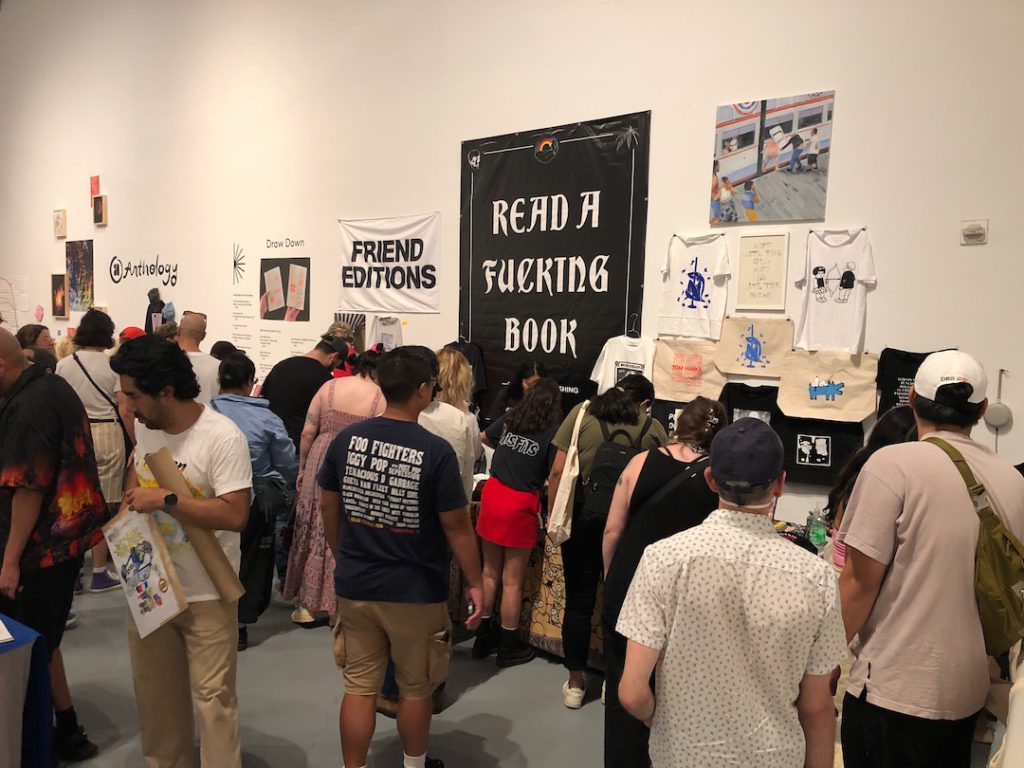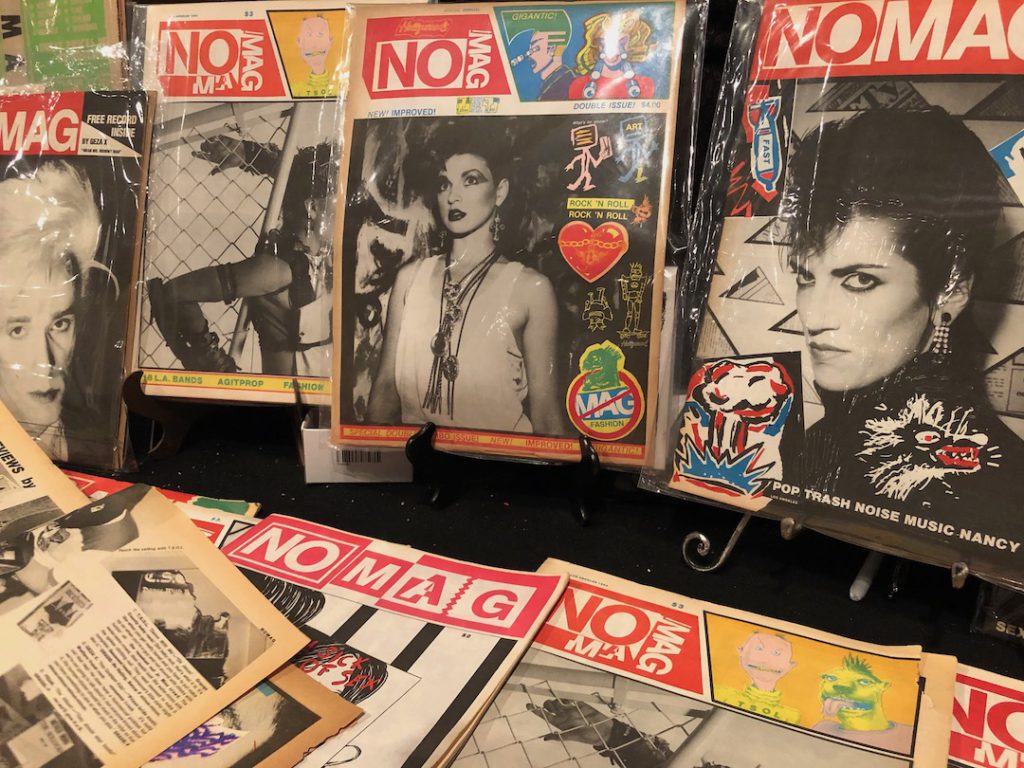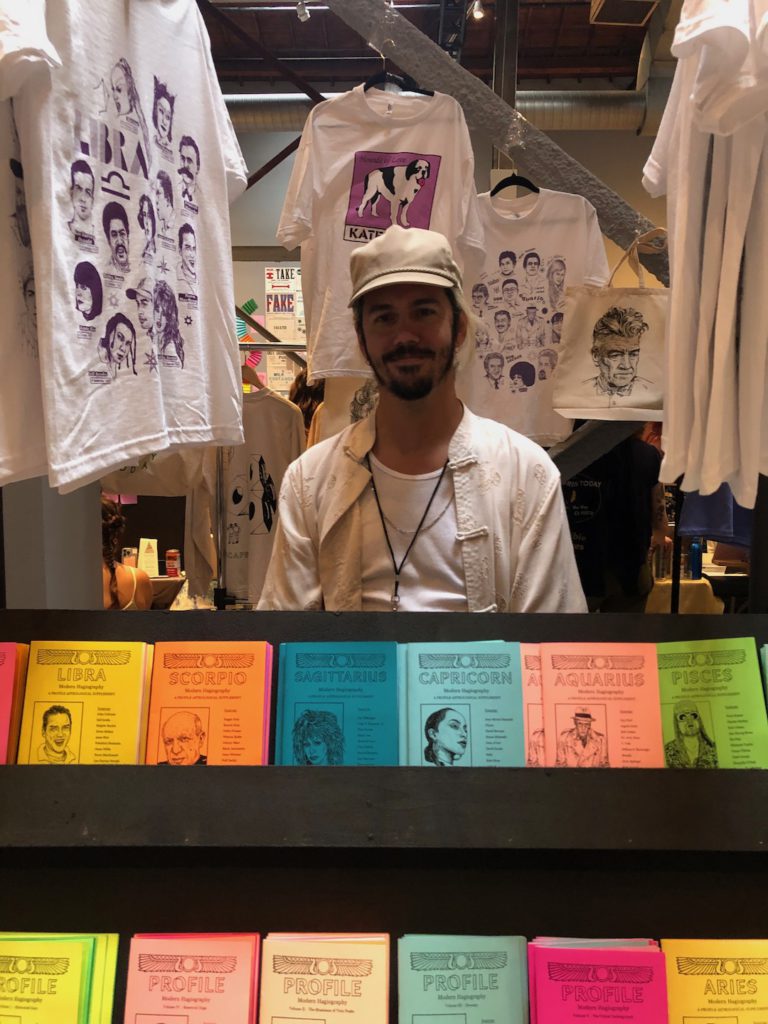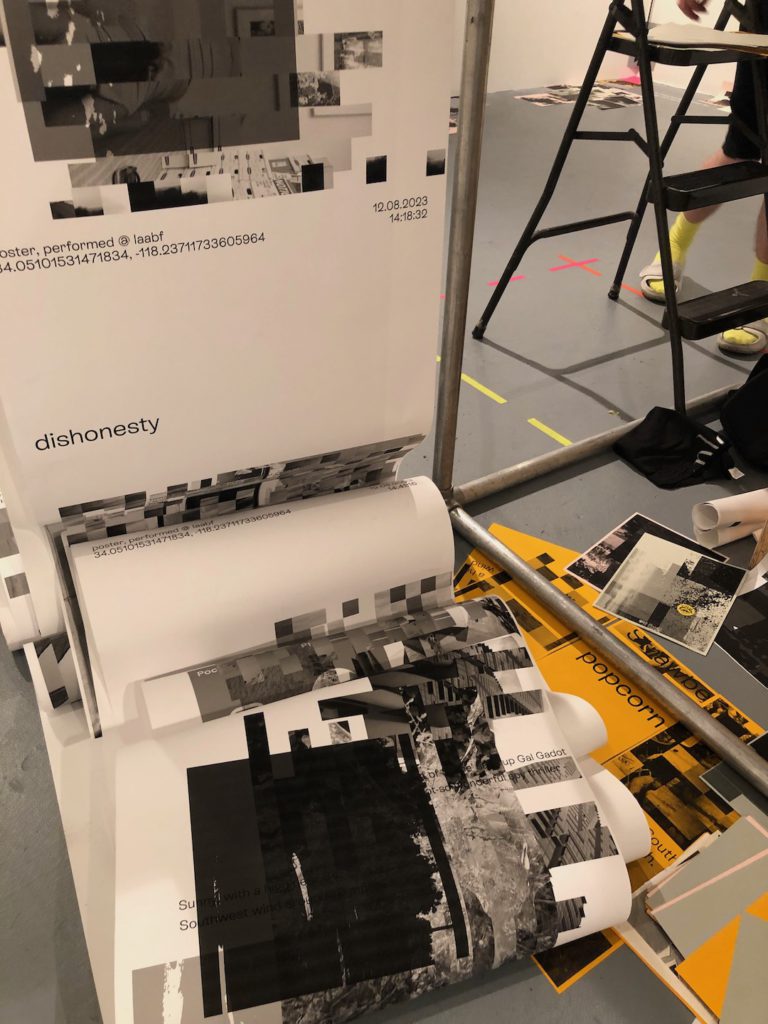
Late in the afternoon on the final day of Printed Matter’s L.A. Art Book Fair, the line outside of MOCA’s Geffen Contemporary stretched to the Japanese American National Museum. I had just stumbled upstairs from the Little Tokyo Metro station and across 1st Street, which was closed to traffic and lined with people hanging out on the sidewalk. That had nothing to the with the book fair though. It was also Nisei Week and the parade was set to start soon. But, I didn’t know that at the time. I just saw throngs of people, flashed back to the years in which I reported from Anime Expo and San Diego Comic-Con and groaned.
Immediately, I regretted the decision to pry myself off the couch and away from another Dark Shadows binge. In Collinsport, Maine, it’s always gloomy. People wear sweaters and jackets even when it’s supposed to be summer. It’s a cute look that makes me a little envious of life in permanently grey, fictitious towns. More importantly, though, on-again-off-again vampire Barnabas Collins just returned to 1969 from the 1800s via the 1700s and now there’s this bizarre-o cult storyline with Rosemary’s Baby vibes brewing. But, no, I just had to leave the apartment so that I could queue up under the wretched August sun with people who may or may not know why they are in line.
Eh, I thought, I can live without going to the book fair.
Instead, I decided to walk around the neighborhood because, if I bothered to venture out into the real world, I might as well do something. That’s when I ran into friends and learned that the line was only for people who didn’t have tickets. Then I recalled that I actually did one proactive thing this week and reserved a free ticket that’s sitting somewhere in my email. Guess I would be going to the Art Book Fair after all.
Printed Matter is a non-profit that focuses on artists’ publications. They host art book fairs in New York and Los Angeles, but, the L.A. event, which launched a decade ago, had been dormant since the pandemic. I attended in 2019, but, after the eternity of the COVID lockdown and a couple years of regular life, I can’t remember that much about it, aside from meeting V. Vale at the RE/Search booth and buying his Penny Rimbaud book. So, I was curious to venture inside the event.

The first booth I noticed was for No Mag, a punk magazine that existed in L.A. between the late 1970s and mid 1980s. I flipped through the pages, taking note of an ad for now long-gone record store Vinyl Fetish that announced the shop had a new space on Melrose Ave. Maybe a decade later, Vinyl Fetish became one of my favorite record stores, the place where I would buy more Legendary Pink Dots’ albums than I can recall. I tried to imagine what Melrose looked like before I knew it, before it was the reluctant star of an Aaron Spelling TV show and its sidewalks teemed with a mix of teenage weirdos and tourists. But, my nostalgia for an L.A. that I don’t actually remember was interrupted as more people flocked to the booth. I slipped away into the crowd and continued to roam.
Geffen Contemporary exists in a former police car warehouse. It’s a fairly large space, big enough where it can feel empty even when there are hands full of people milling through the galleries. Today was different. The Art Book Fair was packed and the space looked like an exhibit hall on the last day of a convention, when everyone is crammed around booths looking for their last scores of the weekend.
Moreover, I kept running into people I know, mostly other DJs. I waved down one friend as we passed each other in pocket of nearly empty space. We chatted for a bit and I mentioned that I ran into our mutual friend the previous night at Decadanse. The conversation was short and I’m certain that I sweated profusely as mentions of the heat veered into our talk. Was the air conditioning even on in this place or was it just so packed that AC became irrelevant?

I stopped by Adam Villacin’s booth, which was bustling and filled with zines. I’ve been a fan of his portraits for years— and even interviewed him for Los Angeles Magazine when he was in the midst of his musician series— so it was great to finally meet in person. Then I noticed a booth called Armenian Creatives, which sounded so familiar. It took me a minute to realize that the publishers came up in the research for my story on Western Armenian that ran on LAist earlier this year.
Mostly, though, I wanted to escape the crowd because it was starting to feel like Labor Day Weekend at the Hollywood Boulevard club where I DJed through early ‘00s heatwaves. Even my feet were hot. I walked through the museum’s maze-like aisles until the crowds dissipated and noticed a small space covered in posters with reams of paper spilling out of printers set up in the center of it. It’s a project called poster, performed, where user-submitted images are essentially remixed by an algorithm, printed and displayed. It’s an interesting way to transform digital art into something tangible and best seen in person. I hung around for a little bit, talked to one of the collaborators and then made my way as more people ventured towards the exhibit.

It’s not that I was particularly irritated by the existence of a crowd. In fact, I was excited to see so many people there. It meant that, no matter what internet know-it-alls and corporate bullshitters tell you, people actually do want to read words and look at pictures printed onto paper. But, at the same time, I knew I was creeping close to my limit for maneuvering my way through a mass of bodies.
I made my exit as the Nisei Week parade moved through the streets of Little Tokyo. While I saw relatively little of what was happening at Art Book Fair, I was satisfied with what I did get to catch. After spending too many years writing about large events, I’ve learned that you don’t have to see or do everything. It’s often best to let the day unfold as it will and enjoy whatever crosses your path.
Check out Los Angeles-based DJ and writer Liz O. at one of her upcoming gigs.
